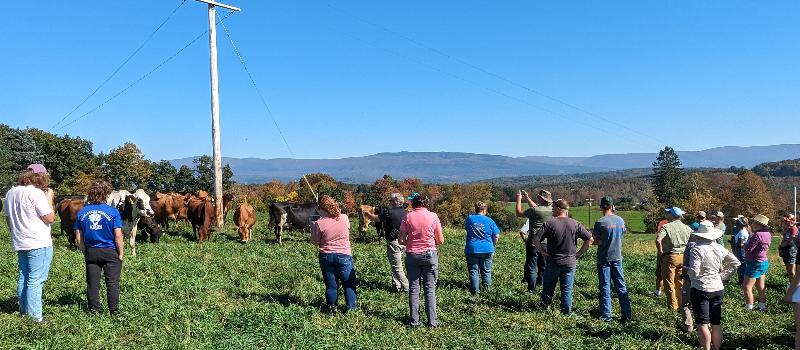
Regenerative agriculture, or agricultural practices that improve soil health, are often associated with organic and specialty vegetable production, is gaining recognition for its soil health benefits. While ecological and nutritional improvements are commonly cited, recent training sessions attended by ASA staff, board members, and farmers have revealed that the most significant advantage of enhancing soil health lies on the balance sheet. Moreover, this success extends beyond boutique market-gardens to encompass livestock and other regional farming operations.
Highlighted in recent NYS farm case studies by American Farmland Trust (AFT) and Natural Resources Conservation Services, improving soil health can bring financial benefits alongside ecological advantages. Changes in agricultural practices that enhance soil function translate into financial sense. For example, no-till practices reduce equipment costs, integrated pest management lowers pesticide demand, and grazing livestock reduces hay harvesting and manure-spreading expenses. In addition, growing nitrogen-fixing cover crops reduces fertilizer needs, while reduced machinery use leads to less soil compaction, better rainfall storage, and reduced ponding during extreme rainfall events.
At the conserved Otter Creek Farms, stewardship of soil health is key to their success. Elizabeth Collins and Brad Wiley’s investment in soil health has led to double and triple plant mass, increased resilience in extreme weather conditions, and improved profitability. Their farm's success is closely tied to forage quality and quantity, enabling them to raise more animals per acre and improve their bottom line.
“Where health and fertility has been restored, we see double to triple the plant mass, the plants are more resilient in extreme weather events, including drought, excessive rain and even frost/freezing. Our farm’s profitability is based on the quality and amount of forage we can grow. If we have more forage...we can raise more animals per/acre (which equals $/acre) and if the forage quality is high...then we have a healthier herd and more weight/day on our growing calves. The science of grazing is important. To witness the change on a seasonal and annual basis, is amazing and inspiring.” -Elizabeth Collins, Otter Creek Farms
Improving soil health benefits fields of all sizes from gardens to expansive farmland. Smaller areas allow experimentation without risking the entire farm. Whether it's grazing dry herds to cut feed costs while enhancing soil quality or reducing hay cuttings to regenerate a worn-out hayfield, there's room for learning and scaling up. Observation, including monitoring healthy aggregation, insect and earthworm populations, and mycorrhizal fungi, guides soil health improvements.
As part of a soil health grant from AFT, ASA's stewardship team will develop outreach and educational programs on soil health. They're equipped with new tools and quick field assessments to assist farmers in addressing soil health concerns.
Regenerative agriculture's soil health benefits extend to financial gains, making it a wise investment for farms of all sizes and operations. ASA is committed to supporting farmers on their soil health journey through outreach, programming and resources, fostering a brighter future for agriculture, our ag communities, and the environment.
ASA is committed to supporting farmers on their soil-health journey through outreach, programming and resources, fostering a brighter future for agriculture, our ag communities, and the environment. Get Soil Savvy: https://farmlandinfo.org/publications/soil-health-case-studies/

